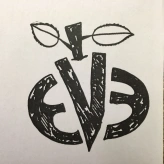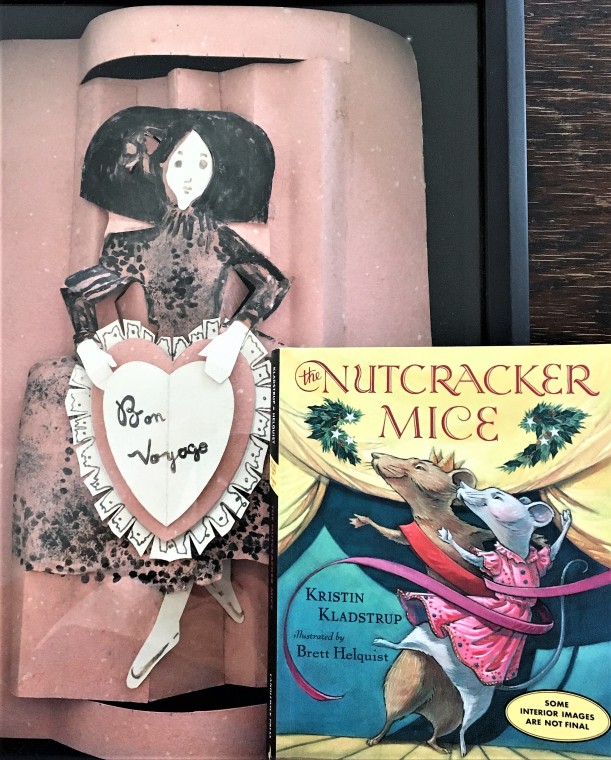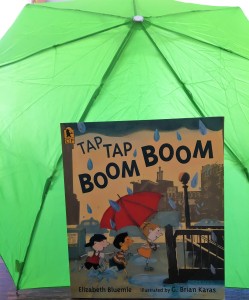Day One Dance in the School 2015: 
What is mindfulness and how does it fit into the school day?
Maria Baldwin School, Cambridge, MA
Megan Powers & Karma Paoletti’s 2nd grade classrooms
A great opening for my in-school yoga and mindfulness program is to take the school’s core values or credo and work it into the mindfulness theme.
The Maria L. Baldwin’s CORE VALUES
We, the students of the Maria L. Baldwin School:
• Always give our best effort. (determination-a great word that self implies action rather than stagnation)
• Stand up for ourselves and others. (loving-kindness, compassion, empathy and peace. See the four abodes of yoga)
• Are kind, positive and safe. (Ahimsa *see Yamas)
• Treat others the way we want to be treated. (Ahimsa, Satya, Asteya, Brahmacharya, Aparigraha* See the Yamas)
• Work together to make a fun learning community. (loving-kindness, compassion, empathy and peace. See the four abodes of yoga)
 Mindfulness teaches loving-kindness, compassion, empathy and peace (Calmness and levelheadedness) and those are the foundation of a strong school community where teachers are nourished and classrooms are strengthened.
Mindfulness teaches loving-kindness, compassion, empathy and peace (Calmness and levelheadedness) and those are the foundation of a strong school community where teachers are nourished and classrooms are strengthened.
Today’s class started with the making of Breathing Sticks (When I teach a math based yoga curriculum, I bring in my abacus and show the kids how to use it. Also, for those classes, I call the sticks Breathing Abacuses) Here you use a large pipe cleaner, knot one end, slide on 5 beads and then knot the other end. This is a great visual for the students to use to follow for 5-deep, relaxing breaths. Using a nice slow, but steady inhale through the nose, slide the bead ½ way down the pipe cleaner as you are breathing; then a nice and easy exhale through the nose as it completes its journey to the other side. I usually lead the process one full-time through and then ask for a “turtle breath” leader and the group then focuses its attention on that person. Each student moves the beads on their own stick while following the leader. This great exercise was taught to me by Elizabeth Goranson of Stretch What Matters and I think it fits beautifully into a classroom based program and can easily be implemented by the regular classroom teacher.
Mindfulness is something that can be practiced every day throughout the day. Using mindfulness as a strategy to ease transitions works for all students and faculty alike. The sticks are a great resource because even if they are not available for use, their image can be called up in the mind and still be used as a focal point. At any point, such as the start of the day, the start of a class, the end of a class, have your students stop what they are doing, sit up with a straight spine, although not too straight to be rigid, but up right and awake, close their eyes or not, and take five breaths. Have them become aware of the breath, such as how it feels (It is cool as it enters and warm as it exits. Is it in the belly or the chest? Is it deep or shallow). Doing this will help both you and them anchor yourselves into the present moment…to be in the NOW. These few breaths will help you become aware of your body (notice tension, ease, tightness, calmness), your emotional state (frustrated, bored, excited, joyful, angry), your energetic state (tired, on edge, energetic…) and what is going on in your mind (busy, clam, cloudy, clear….). There are no right or wrong answers, this is just a time to notice and it only takes about 3 minutes. Just starting your day with these 3 minutes will actually allow you to have more productive time in your classroom; it will not be time wasted.
After completing our breath work, I like to check-in with the students to see how they are feeling. They usually like to share their emotional, energetic or physical energy. I also ask, What is yoga? And get answers such as exercise, stretching, it calms you down, and What is meditation? Sitting quietly and not talking, Sitting like this (and they show a mudra), relaxing your mind….
Today I taught the Sa-Ta-Na-Ma meditation. The moving of the fingers and the repetitive chant is a great way to put thought out of the mind with little effort. I always follow Shakta Kaur Khalsa of Radiant Child Yoga‘s suggestion of the sequence: out loud, in whisper, in head with hand movements only, in whisper and then out loud again. With this age group I generally have them it 8x in each sequential stage.
Warm-Up:
seated easy twist (can be with or without partners)
cow and cat (meow) to ½ scorpion balance to pointer dog balance to one-legged bow pose (both sides)
child’s pose
Downward Dog to 3-legged dog (wag leg like a tail woof woof) to bend knees, look at hands, jump forward to hands
Stand Up
Sun salute-full body warm up, a great way to wake your body up for the day
Mountain-to up mountain to chair pose to ski racer pose to standing child pose to lifted chest, knees bent to forward fold (2x)
On second time send right leg back for high lunge (float hands) to low lunge (arms up and head up-look at hands) to moving forward, put weight on front foot and float back leg up (standing split)-float one hand at a time, then try both step into plank press to downward dog-jump through and repeat sun salutation, then lunges on left side. After 2nd plank, float slowly to the floor and then rest in crocodile pose.
Locust
Tree Series
Yogini Went To Sea (end by floating to floor)*Moving meditation that stimulates meridians taught to me by Shakta Kaur Khalsa of radiant Child Yoga
Lie on back, hug knees into chest
Stretch legs to ceiling (this is the version of candle stick pose I use in a classroom situation-no trauma for the necks and backs and it gets the legs over the heart), roll ankles, point and flex feet
Lay out on backs, prepare for relaxation
Deep relaxation exercise:
 The Post Card Rack of Happy Memories (Adapted from an exercise taught to me by Peter DiMuro).
The Post Card Rack of Happy Memories (Adapted from an exercise taught to me by Peter DiMuro).
“Lets start by taking in a few deep breaths together. Allow yourself to feel your breath coming in and out. Focus your breath into your belly. Let yourself go and allow yourself to rest calmly. Imagine a post card rack in front of you, like when you go on vacation and you are looking to send cards to someone, but on this rack, are postcards with pictures of you having happy times. These happy times can be with your family, with friends, by yourself, with an animal, they can be from actual vacations, or just a good time at home, they can be of your favorite place to read, to relax, they can be indoors or outdoors….). Now settle your eyes on one card, it does not have to be your favorite one just anyone your eyes rest on. Think about this happy time…how old were you? What’s the temperature? The smell? The colors? Let your self be wrapped up by all the sensations of this moment. You are safe, loved and relaxed.
I then initiate savasana with a ring of the chimes. I try to give these kids a 5 minute savasana. Three chimes to end.
Explanation of Namaste– the light inside of me, shines to the light inside of you. And by yu saying this, you are saying the same to me. This ultimately means, thank you!
Namaste





 Just in time for the holiday season, comes a soon-to-be classic retelling of the Nutcracker. In this version, the mice live their animated lives right along side the humans at the Marinsky Theater, the historic theatre of opera and ballet in Saint Petersburg, Russia, living in the walls, scavenging for food and dancing ballet. Author Kristin Kladstrup has created an enchanting version of the Nutcracker from the mice’s point of view, bringing the mice to the forefront, and switching around the roles within the story so that mice are the heroes of main characters.
Just in time for the holiday season, comes a soon-to-be classic retelling of the Nutcracker. In this version, the mice live their animated lives right along side the humans at the Marinsky Theater, the historic theatre of opera and ballet in Saint Petersburg, Russia, living in the walls, scavenging for food and dancing ballet. Author Kristin Kladstrup has created an enchanting version of the Nutcracker from the mice’s point of view, bringing the mice to the forefront, and switching around the roles within the story so that mice are the heroes of main characters.

 Boys Dancing by George Ancona is the second book I know by the author, the first being ¡Olé! Flamenco, which is another great non-fiction book about dance. Both books include fun photo illustrations that really highlight the story. In Boys Dancing, I like the foot step pattern that leads you through the pages of the book. These kids faces really tell the whole story. They are so engaging and engaged. You can see form their faces their focus, determination and joy at dancing. The instructor is equally connected and together they learn about dancing with their bodies, minds and energies. This story shows the dedicated dancers and teachers and how a whole production comes together, from school gym to studio to stage. Dance is for boys. It is community building and the story shows how hard work is fun and rewarding. ¡Olé!
Boys Dancing by George Ancona is the second book I know by the author, the first being ¡Olé! Flamenco, which is another great non-fiction book about dance. Both books include fun photo illustrations that really highlight the story. In Boys Dancing, I like the foot step pattern that leads you through the pages of the book. These kids faces really tell the whole story. They are so engaging and engaged. You can see form their faces their focus, determination and joy at dancing. The instructor is equally connected and together they learn about dancing with their bodies, minds and energies. This story shows the dedicated dancers and teachers and how a whole production comes together, from school gym to studio to stage. Dance is for boys. It is community building and the story shows how hard work is fun and rewarding. ¡Olé! Tap Tap Boom Boom by Elizabeth Bluemle lives up to its name as a great choice of onomatopoeia for a rain storm. The delightful illustrations by G. Brian Karas are a cross between photo realism and sweet cartoonish images. The reader not only looks at the scenes, but also up and down and from within them. You feel like one of the pack of people escaping the rain storm! This is a very engaging and entertaining story that promotes community, friendship and the love of a good rain storm!
Tap Tap Boom Boom by Elizabeth Bluemle lives up to its name as a great choice of onomatopoeia for a rain storm. The delightful illustrations by G. Brian Karas are a cross between photo realism and sweet cartoonish images. The reader not only looks at the scenes, but also up and down and from within them. You feel like one of the pack of people escaping the rain storm! This is a very engaging and entertaining story that promotes community, friendship and the love of a good rain storm!
































































 The yoga portion of the class had us first sequencing poses that flow:
The yoga portion of the class had us first sequencing poses that flow: 